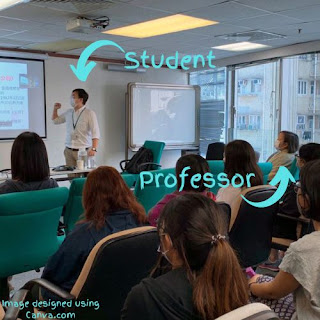Letting My Students Do the Work, or When Class Doesn't Go at all as Expected
In class last week I invited my students to design a study in order to test a hypothesis they had come up with. I gave them a detailed example of my own, but no other guidelines or parameters. The hypotheses were as broad and diverse as the students in class. "The Astral sign doesn't significantly change your behavior." "Business casual attire will make a person more approachable." "Caffeine, if taken before a workout, will improve the workout." "THC, if taken in the morning, will improve the day." And so on.
To test their hypotheses, more than half of the groups designed studies that involved collecting opinion data. For example, "Do you think I would be more approachable if I were wearing a suit and tie?" I asked each group, "Are you sure you want to trust the opinion of your participants?" They didn't know why not to trust them.
So I had an idea. I would ask them a commonsense type of question: Do children make marriages happier? My brother and sister both have kids, and they both describe said kids as the highlight of their lives. The thousand or so people who have encouraged Erica and I to have kids would agree. But this study, which was conducted over two decades, followed couples before, during, and after kids, and researchers found the opposite to be true. Parental happiness declined during infancy, then further during adolescence, and did not return to pre-children levels until years after the nest emptied.
I would conduct a preliminary poll in class to see what they believed, then I would share the data from the study--careful to build the suspense and really dash their hopes at the end. If it worked, then my students would never trust an opinion again.
Then I decided to make a video. I could make it short, share the study, describe the design, interpret the graphs and charts, and pick out a few key summarizing quotes. It would be a 5-minute overview of the article.
But how much would they learn from my presentation? "Oh, I guess I was mistaken"--which, of course, as intro to psychology teachers already know, never happens. It would be much better if they read the study themselves, then they would be interpreting the graphs and charts and finding their own favorite summarizing quote.
So I did the poll, and now I'm sharing the article with them. If it works, then they will struggle through the article, graphs, design, etc., and have a real learning experience.
This is in line with what Neil Postman says about learning--namely, that students learn by doing. Listening to a lecture teaches them how to listen. Puzzling over how to read and interpret articles teaches them how to read and interpret articles.
If I learn something from the process, then I will share that later.
EDIT: My activity did not go at all how I had planned! The wonderfully dynamic and unpredictable character of the face-to-face classroom. I could not get students to answer the target question! I asked, "Raise your hand if you think that, all things the same, married couples are happier with children than without children."
Students wanted to know, for example,
- What do you mean by "happiness?"
- Do the couples want children? Did they say?
- It depends on the kinds of people they are.
- Were they happy without children to begin with?


Comments
Post a Comment